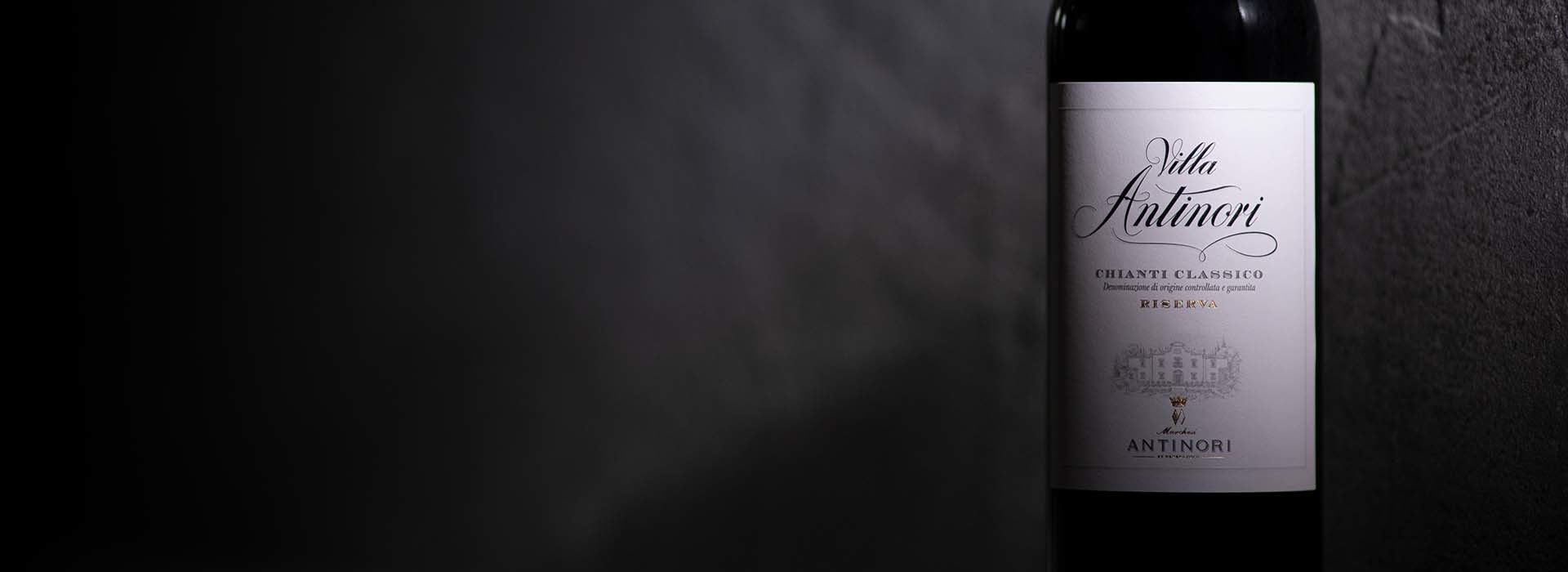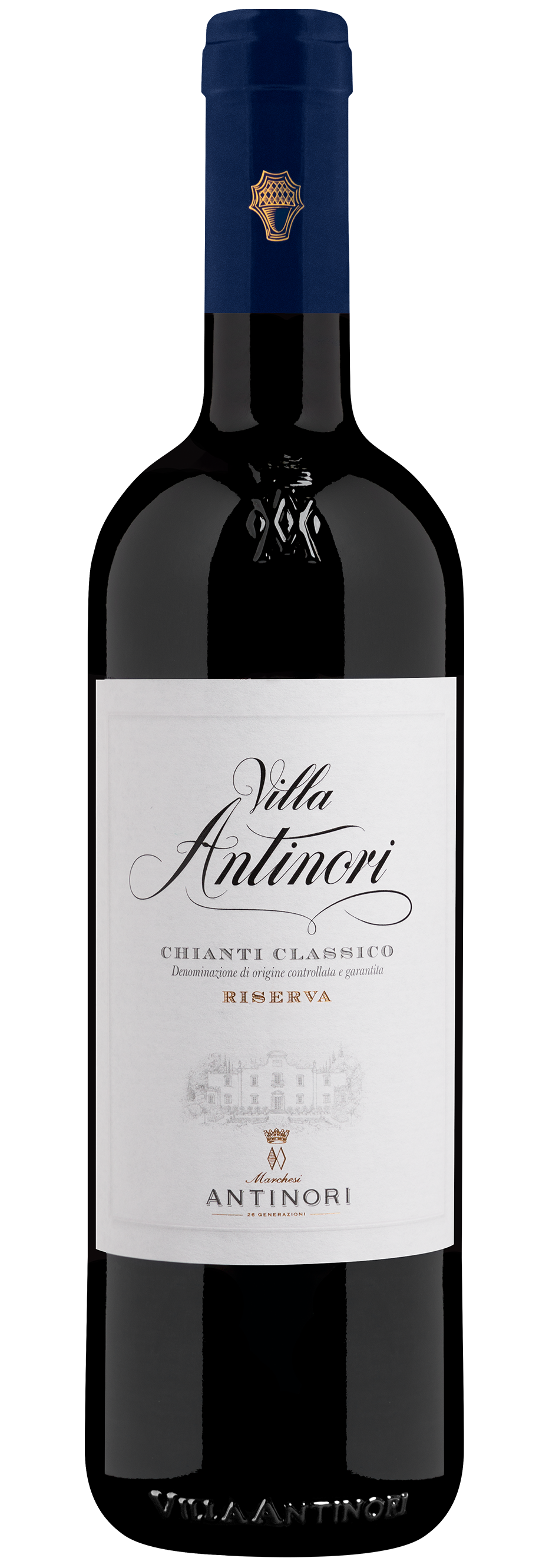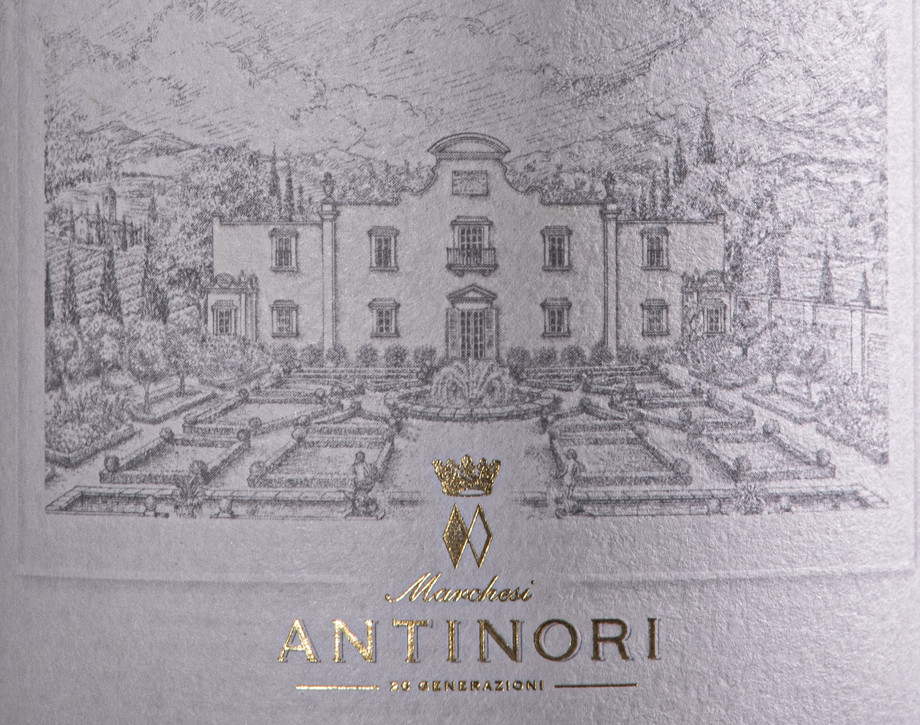Villa Antinori Chianti Classico Riserva

Climate
The fall and winter of 2010 in Chianti Classico were characterized by prevalently cold and rainy weather, while the early months of 2011, instead, were dry and early spring was mild. The warm weather of early April led to a precocious bud burst, approximately ten days ahead of schedule compared to normal seasonal averages. The growth and development of the vegetation continued to be favored by mild temperatures and little rainfall; the cool climate of July brought the phases of the growing back into line. The vines, however, suffered from the heat wave of August and September. The harvest began during the middle third of September with the picking of the Merlot between September 12th and September 20th. During this period the Sangiovese and the Syrah completed their ripening and were then picked during the last week of the month. A careful selection of the bunches was of vital importance for all of the individual grape varieties. Grapes of excellent potential were fermented and, from the very start, yielded musts rich in color, with excellent aromas and varietal character, essential aspects for the production of high quality wines.
Vinification
The grapes were destemmed and given a soft pressing. The fermentation began very rapidly, with the yeasts usefully going to work almost immediately and assisting in creating wines rich in aroma. Skin contact lasted twelve days, and soft extraction techniques – pumping over and moistening the cap of skins in the tanks – gave colored wines with supple tannins. Temperatures were held to a maximum of 86° Fahrenheit (30° centigrade). The young wines were divided into separate lots and kept in oak until the blending of the finished wine in the spring of 2013; 60% of the aging took place in casks and the rest in small French and Hungarian oak barrels, for the most part already used once or twice previously. A small percentage of new Hungarian oak barrels was also utilized. The 2011 Villa Antinori Chianti Classico Riserva was bottled in the Antinori Chianti Classico cellars at Bargino near Florence in July of 2013.
Historical Data
Villa Antinori is, first and foremost, an idea, a way of conceiving the production of wine: on the one hand, experimentation and evolution, on the other hand, continuity in tradition. Sangiovese and other complementary grape varieties render their homage to an historic label and a wine with a long tradition,: this name, in fact, is almost one hundred years old, as the wine was produced for the first time in the 1928 vintage. With the inauguration of the Antinori Chianti Classico cellars, the family wished to reinterpret a Tuscan classic with a Riserva offering which is both delicate and, at the same time, elegant and decisive in flavor.
Tasting Notes
The 2011 Villa Rosso Chianti Classico DOCG Riserva, an intense ruby red in color, features an equally intense nose of red fruit, raspberries, and blueberries, followed by hints of oak and spices, particularly cloves, on the aromatic finish. On the palate, the wine is immediately vibrant and very territorial in character. The tannins are supple but well present. The finish and aftertaste are fruity and the light notes of oak long and lingering.
Awards
Wine Enthusiast 91/100 USA Antonio Galloni 90/100 USA

The Wine
Villa Antinori Chianti Classico Riserva is a blend of Sangiovese together with other complementary varieties produced as a tribute to Antinori’s historic label that has accompanied the family’s winemaking traditions over the years. The inauguration of the new winery Antinori nel Chianti Classico inspired the family to reinterpret this Tuscan classic into a premium quality wine with unmistakable style, the resulting Riserva is delicate, decisive and elegant.

Climate
The fall and winter of 2010 in Chianti Classico were characterized by prevalently cold and rainy weather, while the early months of 2011, instead, were dry and early spring was mild. The warm weather of early April led to a precocious bud burst, approximately ten days ahead of schedule compared to normal seasonal averages. The growth and development of the vegetation continued to be favored by mild temperatures and little rainfall; the cool climate of July brought the phases of the growing back into line. The vines, however, suffered from the heat wave of August and September. The harvest began during the middle third of September with the picking of the Merlot between September 12th and September 20th. During this period the Sangiovese and the Syrah completed their ripening and were then picked during the last week of the month. A careful selection of the bunches was of vital importance for all of the individual grape varieties. Grapes of excellent potential were fermented and, from the very start, yielded musts rich in color, with excellent aromas and varietal character, essential aspects for the production of high quality wines.
Vinification
The grapes were destemmed and given a soft pressing. The fermentation began very rapidly, with the yeasts usefully going to work almost immediately and assisting in creating wines rich in aroma. Skin contact lasted twelve days, and soft extraction techniques – pumping over and moistening the cap of skins in the tanks – gave colored wines with supple tannins. Temperatures were held to a maximum of 86° Fahrenheit (30° centigrade). The young wines were divided into separate lots and kept in oak until the blending of the finished wine in the spring of 2013; 60% of the aging took place in casks and the rest in small French and Hungarian oak barrels, for the most part already used once or twice previously. A small percentage of new Hungarian oak barrels was also utilized. The 2011 Villa Antinori Chianti Classico Riserva was bottled in the Antinori Chianti Classico cellars at Bargino near Florence in July of 2013.
Historical Data
Villa Antinori is, first and foremost, an idea, a way of conceiving the production of wine: on the one hand, experimentation and evolution, on the other hand, continuity in tradition. Sangiovese and other complementary grape varieties render their homage to an historic label and a wine with a long tradition,: this name, in fact, is almost one hundred years old, as the wine was produced for the first time in the 1928 vintage. With the inauguration of the Antinori Chianti Classico cellars, the family wished to reinterpret a Tuscan classic with a Riserva offering which is both delicate and, at the same time, elegant and decisive in flavor.
Tasting Notes
The 2011 Villa Rosso Chianti Classico DOCG Riserva, an intense ruby red in color, features an equally intense nose of red fruit, raspberries, and blueberries, followed by hints of oak and spices, particularly cloves, on the aromatic finish. On the palate, the wine is immediately vibrant and very territorial in character. The tannins are supple but well present. The finish and aftertaste are fruity and the light notes of oak long and lingering.
Awards
Wine Enthusiast 91/100 USA Antonio Galloni 90/100 USA

Villa Antinori
Villa Antinori is an important corner stone as its name is associated with over 100 years of history. At the same time it represents ongoing progress. The one essential principle is continuous research for increasingly higher quality standards. This idea produced two different wines that share a common passion for quality: Villa Antinori Rosso and Villa Antinori Bianco. Villa Antinori was originally produced in 1928 by Marchese Niccolò Antinori as a Chianti Classico that could age and that would improve over time. Soon after, Villa Antinori was found in the most prestigious cellars in embassies, royal houses, important hotels and restaurants. In 1931, Villa Antinori Bianco was made from traditional Trebbiano grapes. In the 1980’s a small percentage of Chardonnay was added in order to give the wine better structure.
















